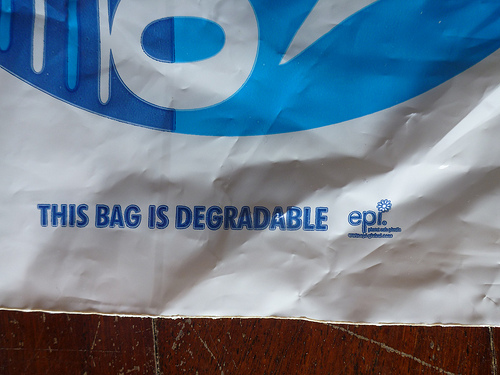Throwing around buzzwords and adopting new practices for the sake of jumping on the eco-friendly bandwagon without really knowing what the terms mean can lead to more harm than good. A classic example of good intentions gone bad is the use of biodegradable plastic.
Biodegradable plastic, particularly polylactic acid (PLA), is indeed a lot better for the environment since they are designed to decompose by up to 4 times faster than PET-based plastic products. Unfortunately, what most people do not realize is that the biodegradable tag does not mean that you can throw away that plastic out the window and expect it to decompose on its own like you would a banana peel. In fact, William Harris debunks this myth saying, “conditions have to be just right to achieve these kinds of results. PLA breaks down most efficiently in commercial composting facilities at high temperatures. When buried in a landfill, a plastic bag made from corn may remain intact just as long as a plastic bag made from oil or natural gas.”
Because people are not aware of the negative effects of biodegradable plastic, they do not dispose of the plastic in a more responsible manner. Sadly, instead of helping cut back on the overwhelming amount of plastic waste, the biodegradable plastic products that were meant to be composted end up in landfills and waterways just like non-biodegradable ones. Even worse, people are less conscious when it comes to cutting back on the use of plastic, thinking that they won’t create much of a problem anyway due to their biodegradable nature.
So the next time you use plastic, whether it’s labeled biodegradable or not, make sure you dispose of them properly. Better yet, just keep on following the mantra of reduce, reuse and recycle just to be sure. Plastic waste is still waste and the best thing we can do for our planet is to make as little of it as possible.
